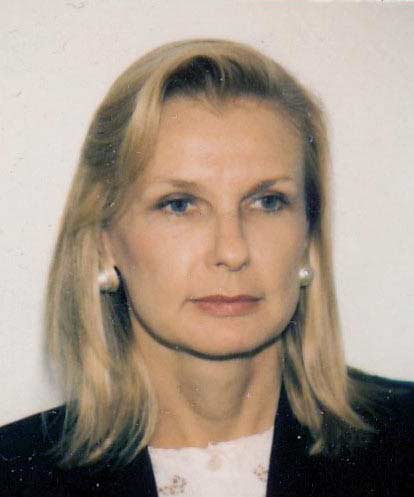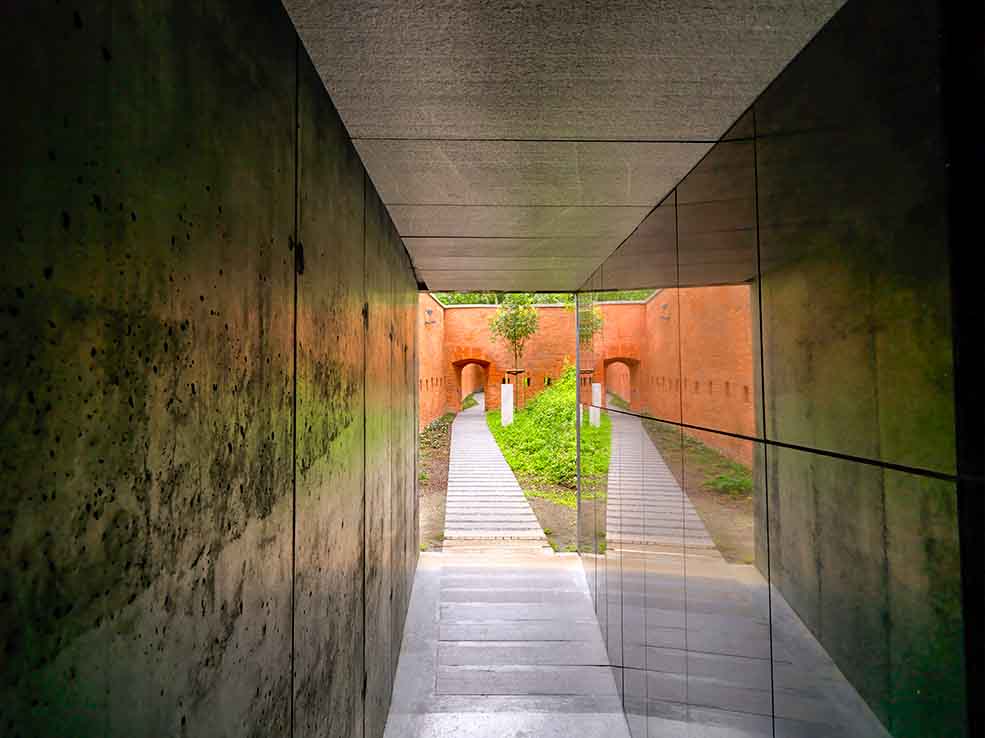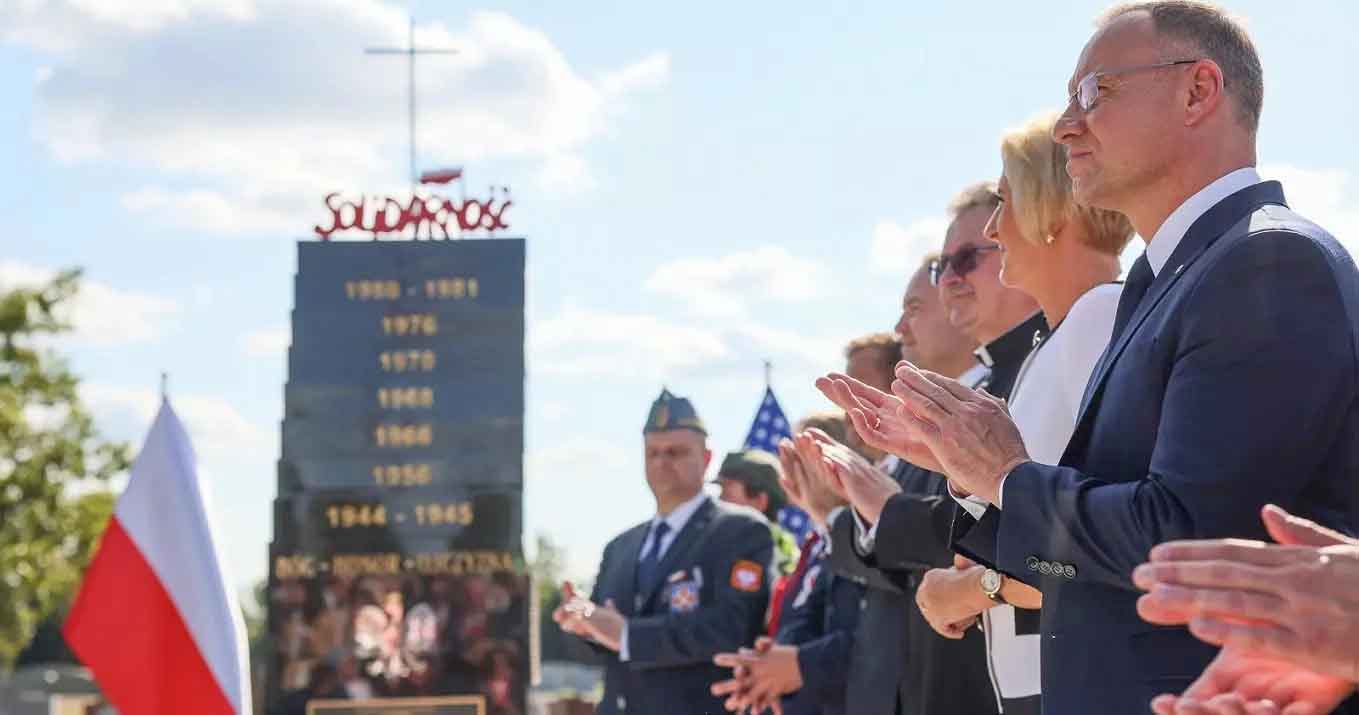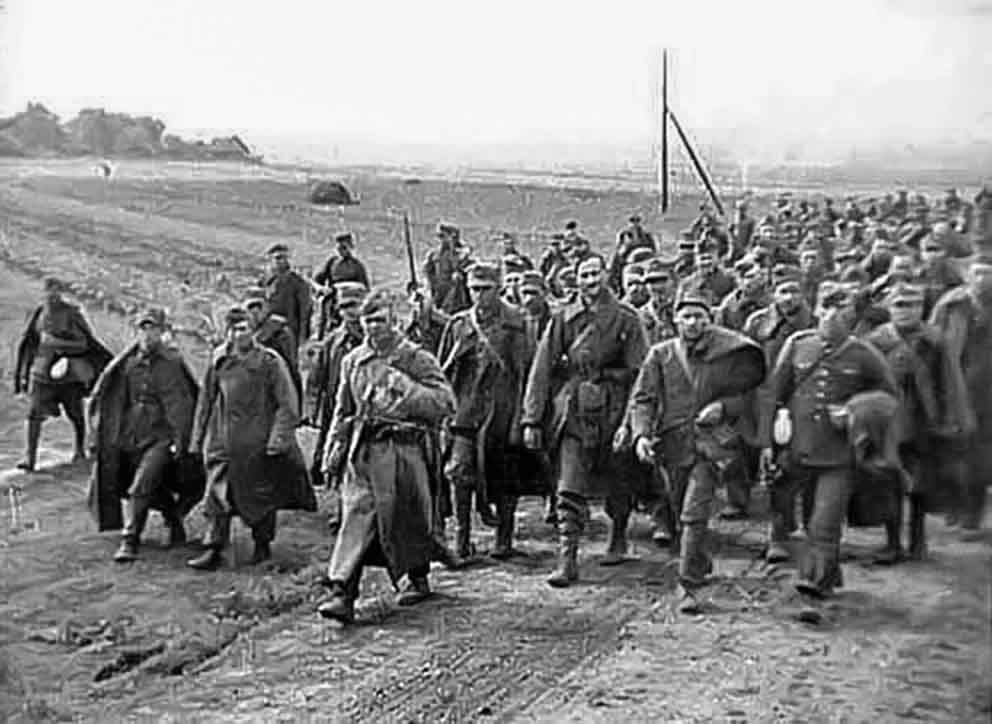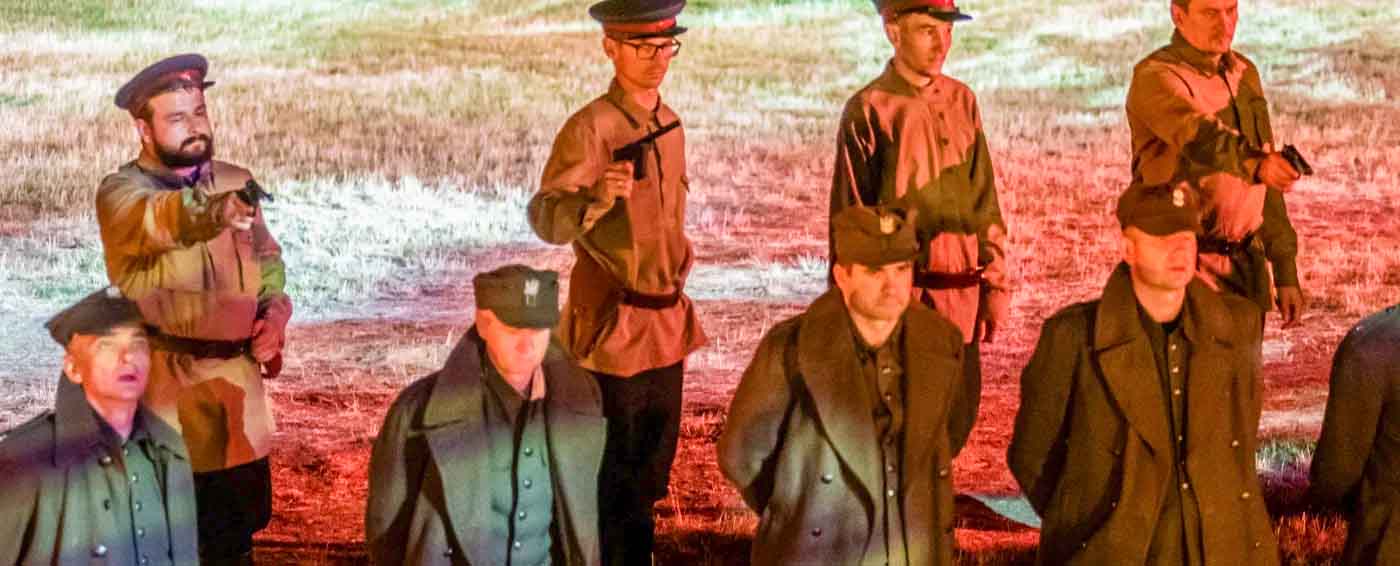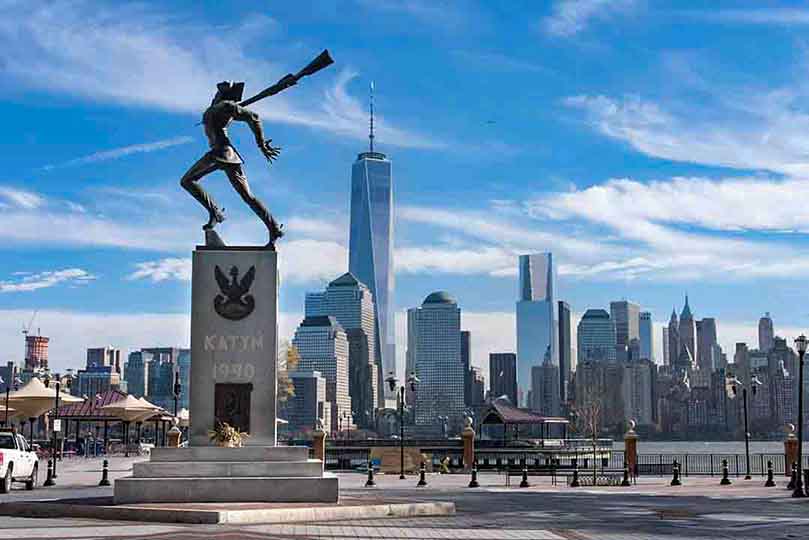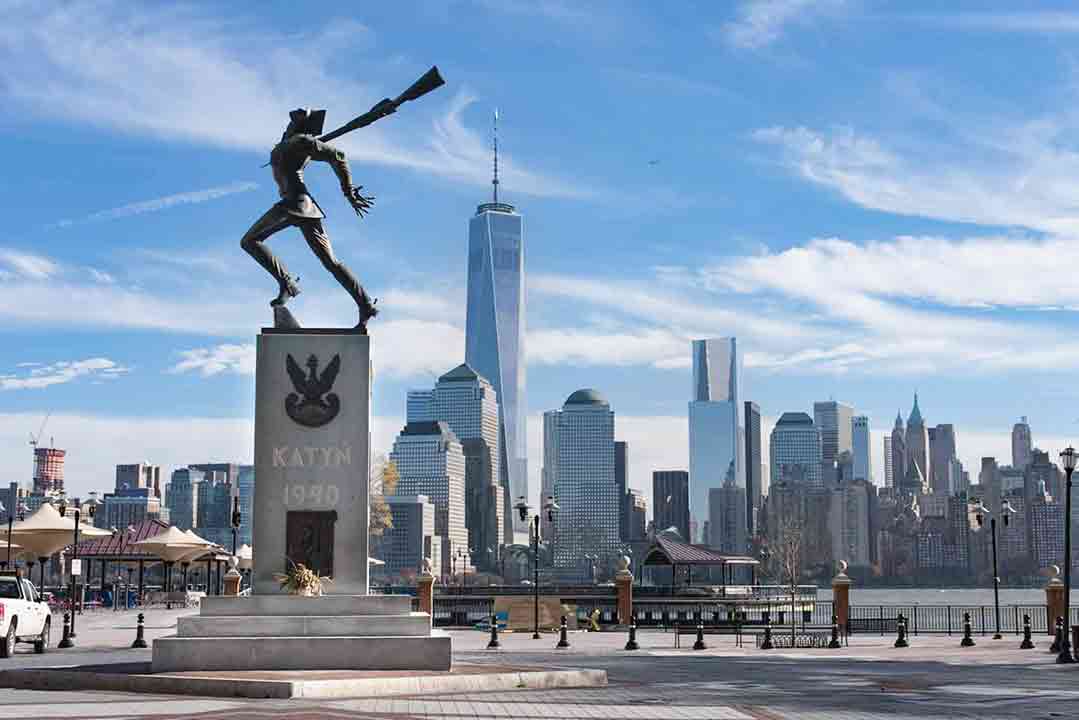Protecting historical landmarks symbolizing freedom and horrors of genocide should be above reproach. However, the Jersey City monument commemorating the 1940 Katyn massacre of 22,000 Polish POW officers held by the Soviet Army after its 1939 invasion of Poland was challenged and plans were made for its removal in May last year.
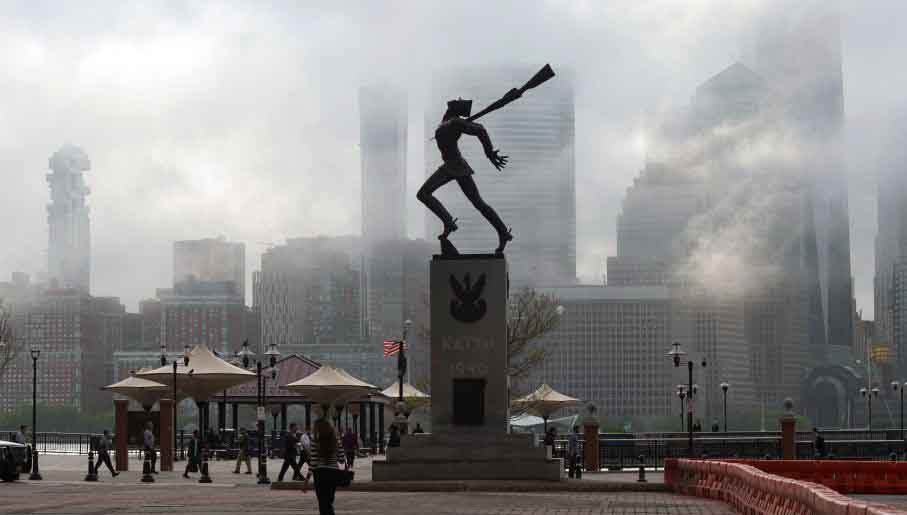
Monument to the Victims of the Katyn Massacre, Jersey City, NJ (Source: TVP World)
The statue representing a Polish officer stabbed in the back by a Soviet bayonet is dramatically situated on the shore of the Hudson River with the New York World Trade Center, and now Freedom Tower, as a background. Comments were circulated that the monument is too grim and brutal and gives the Russians a bad reputation. The town mayor and his real estate backers want to remove it and replace with outdoor restaurants more suitable to a consumption era. But the destruction of this monument would deprive the American public of an essential universal symbol of modern history, which remains relevant today and serves as a warning to younger generations.
Katyn came to symbolize not only the execution of Polish POW officers but all Soviet murderous policies toward Poland of this time period. 1940 was also the beginning of Soviet deportations of 1.5 million Polish citizens to Siberian gulags where the majority perished from hunger, cold and disease. There was also the so-called pre-Katyn, where communist party activists assassinated Polish officers and government officials in Eastern Poland after Germany invaded Poland on 1 September 1939 but before the Soviet Army joined them on 17 September.
Katyn also seems to be connected with the NKVD Polish operation where, between 11 August 1937 and the end of November 1938, about 200,000 Poles living in the former Polish territories of the USSR were shot in the back of the head, selected on the basis of their Polish names listed in a phone book or census. Their very existence was regarded as a threat to the communist hold on power. In addition, the deliberately induced Great Famine in Ukraine in 1933 also affected tens of thousands of Polish peasants living there.

Exhumation of the bodies of Polish officers murdered in Katyn in 1940 (Source: PAP/Archive)
The German discovery of Katyn mass graves led to accusations of Soviet guilt, while the Soviets blamed the Germans. When the Polish government in exile asked the International Red Cross for an investigation, Stalin not only broke off diplomatic relations with Poland but also denounced the London government as an ally of Nazi Germany just because it implied doubt about Stalin’s innocence. This became a rationale to put forward his own quasi-governmental committee, made up of the ad hoc group of communists and secret Comintern operatives. Thus, in Poland, Katyn symbolizes not only an attempt to exterminate the Polish elite, but more importantly, the implementation of Stalin’s plan to enslave the whole country, killing anyone who might stand in the way, and impose the oppressive and violent Soviet communist rule in the postwar period.
But the significance of the crime of Katyn is not only paramount for Poland but has a universal meaning. Most importantly, the Katyn massacre led the Polish government in exile to invent and articulate the concept of "genocide": actions and mass killings directed to annihilate the whole nation, believed to be the aim of the Nazi and Soviet occupation regimes tied together in the Molotov-Ribbentrop Pact of 23 August 1939. Polish government lawyer Raphael Lemkin wrote a draft law in 1943 using the term "genocide" describing policies aimed at destruction of the whole Polish nation and its means of existence.
After the war, it was codified in the UN Convention on the Prevention and Punishment of the Crime of Genocide, and the UN Declaration of Universal Human Rights, both signed in 1948. This crime is so abhorrent that it has no statute of limitations. Prof. John Connelly of University of California at Berkeley called it the ultimate crime. Its perpetrators are forever guilty and can be brought to justice any time. This crime marks both victims and perpetrators in a timeless and absolute manner.
A concept of genocide is increasingly used in the modern world. Revolutionary violence carried out against whole civilian populations has become a trait of modern war. Consequently, demands for punishment of perpetrators or at least a public recognition of their guilt, are made. The status of victims is also important in order to establish a historical record, restore their memory and gather a sympathetic attention of the world. International bodies as well as public opinion are increasingly examining claims of victims whether in Armenia, Ukraine, Cambodia, or elsewhere.
The significance of Katyn lies not only in the evil crime that it symbolizes but also in its cover-up. While the Germans discovered mass graves in spring of 1943, all the physical evidence pointed to the time of death in April of 1940 before the German invasion of Russia in June 1941. Despite the forensic evidence, the Soviets maintained their denial all throughout the postwar period. Even more painfully, the Western powers also upheld this lie, even after World War II when the Soviet Army’s help in defeating Germany was no longer necessary. Only in 1952, the so-called Madden Commission of the US Congress concluded an inquiry that established the Soviet guilt.
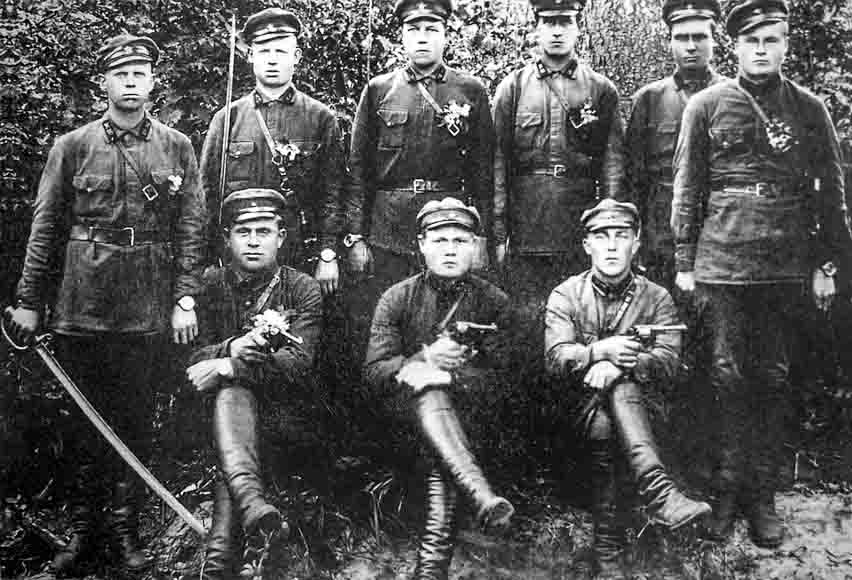
NKVD officers received watches for murdering Poles. In this photo, they arrange their hands to show off these watches (Source: Educational Portfolio of the Institute of National Remembrance (IPN))
Soviet leader Mikhail Gorbachev visited Warsaw in 1988 to urge communist leaders to embark on perestroika and was told that the lie of Katyn was an insurmountable obstacle to better Polish-Soviet relations. About a year later, Gorbachev and, subsequently, the Russian President Boris Yeltsin acknowledged the Soviet guilt and published the original order to kill Polish officers, signed by Stalin and his Politburo. A full investigation was started as many perpetrators were still alive. However, when Vladimir Putin became president of Russia he closed the investigation, made court files secret and treats Katyn as one of many mass murders, perpetrated by Stalin. He denies that Katyn should be classified as genocide.
In many other cases of unrecognized genocide, the truth is similarly hard to establish and recognize. Even when the facts are self-evident, perpetrators deny them. Nobody wants to admit to carrying out genocide. Nobody wants to be one of the most monstrous criminals in history as well as to assume legal and material responsibility. Whether genocide was carried out against Armenians, Ukrainians, or Cambodians, perpetrators keep asserting their innocence and denying responsibility.
Thus, the Katyn massacre was a harbinger of "modernity" and of total warfare with its unbridled violence against the innocents and the denial of human dignity and memory. It was experienced not only by the Poles but many others. That’s why the Katyn massacre monument is so important not only to commemorate Stalin’s crimes against Poland but as a warning that such crimes are possible against anyone if governments have unchecked power, ideological blinders, and no moral restraints. Katyn monument stands against the crime of genocide as well as against the erasing of memory of the victims, as when NKVD killers built their vacation retreat on top of mass graves in Katyn.
The battle to preserve the Katyn Massacre monument is won for now [* see note below]. On December 19, the Jersey City Council approved the ordinance to keep it in its present location in perpetuity. But it has been a bitter struggle for the Polish American community from the mayor’s decision to remove the monument in May to victory. The initial protests led to a mayor’s proposal to move it to a less prominent place along the Hudson River, but it soon became clear that this was a smokescreen with no real action behind it. As a result, protesters started collecting signatures to hold a public referendum on the issue. To the surprise of many, this citizen initiative succeeded, and the referendum was scheduled for December 11. There were lawsuits, there were rallies, and there were stormy council meetings. In the end, the referendum was cancelled but the goal was achieved. The city council finally decided to keep the Katyn monument and to rename the square where it is located as the Freedom Plaza, celebrating those fighting for freedom, independence and human rights.
The Author wrote the original article in English only.
NOTE: Although the battle to preserve the current location of the Monument on the shore of Hudson River in Jersey City has indeed been won — at least, for now — the whole debacle regarding the Monument is far from over. It's as if the Monument were inconvenient to someone willing to go to a lot of trouble to influence the City Planning Commission and the Common Council. There is construction activity around the Monument currently and it is not clear whether the City plans to permanently restrict access to it and/or reduce its visibility. We will definitely revisit this issue in a future article. [— Kuryer Polski]



